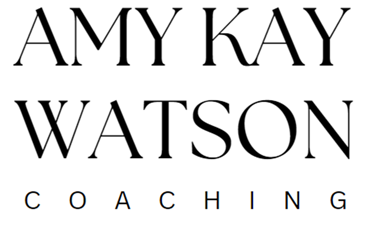Leadership Lessons in Balancing Empathy and Accountability
Many leaders I coach enter their roles with a powerful, noble drive to create positive change. They envision empowering teams, streamlining processes, and driving exceptional results.
Yet, in their zeal to improve performance, many fall into what I call “the reformer’s trap.”
I see this pattern often. A new manager, terrified of becoming the “out-of-touch” leader she once had, finds herself paralyzed. Her empathy, a core strength, has become a barrier to addressing clear underperformance on her team. She’s caught between her deep compassion for her people and the mounting pressure to get results.
The reformer’s trap is this painful conflict: how do you hold people accountable without becoming the controlling, rigid leader you never wanted to be?
It begins with good intentions, but when results don’t meet expectations, the reformer defaults to control: micromanagement, rigid policies, and harsh feedback. Instead of inspiring growth, this approach erodes trust and creates a culture of fear-driven compliance.
Why We Fall Into the Trap: When Empathy Becomes a Barrier
This isn’t just a failure of “soft skills”; it’s a systemic problem. The reformer’s trap is often a symptom of a leader who is still stuck in “doer” mode. Because they were promoted for being excellent at their tasks, their instinct is to “fix” problems themselves.
When a team member struggles, this “fixer” mindset kicks in, but it’s disguised as empathy. We tell ourselves we are “protecting” the team member from failure or “shielding” the rest of the team from extra work.
In reality, this is a pattern of toxic rescuing. We are over-functioning. By taking on the responsibility for our team’s performance instead of empowering them, we inadvertently crush their self-efficacy and agency. We create a bottleneck, burn ourselves out, and—most critically—deny our people the opportunity to learn and grow.
The Cost of Control
When accountability is driven by a leader’s anxiety, it’s always punitive. It damages the psychological safety required for innovation and honesty.
- Employees disengage, focusing on compliance instead of contribution.
- They hide problems for fear of blame, making sustainable improvement impossible.
- Trust is eroded, and your best people—the ones who crave ownership—begin to look for the exit.
Breaking free requires rejecting the false choice between results and kindness. The solution is a system of empathetic accountability.
How to Break the Trap: A 3-Step Framework
Instead of defaulting to control, you can build a framework that holds people to high standards with deep compassion.
1. Start with “Clear is Kind” Expectations
The reformer’s trap thrives on ambiguity. When expectations are vague, any “accountability” feels like a personal judgment. The first step is to create clarity.
I once coached a first-time supervisor who was terrified of micromanaging her intern. In her effort to “give space,” she offered no structure, leaving both of them anxious and unsure.
Story: “Is It Micromanaging?”
A new supervisor, Beck, was determined not to micromanage. But in trying to give space, she noticed long silences and wasn’t sure if the intern needed help or independence. Through reflection, Beck realized that rather than guessing, she could ask her intern how much support felt helpful. This shift—from protecting autonomy to co-creating it—was her first step in mastering empathetic leadership.
Your Practice: Stop guessing. Co-create expectations. Ask:
- “What does success look like for this project?”
- “What’s a realistic deadline for the first draft?”
- “What kind of check-ins or support would be most helpful for you?”
2. Diagnose with Empathy, Not Judgment
When performance falters, a reformer’s first question is “Who is at fault?” A leader’s first question is “What’s in the way?”
Take time to understand the why behind the poor performance. This isn’t about excusing it; it’s about diagnosing the root cause. Often, the employee is not defiant—they are stuck, scared, or unclear.
Story: He Came to the Realization Himself
Dove, a manager, faced a recurring challenge with a defensive employee. Instead of confronting him directly (which had failed before), she changed her approach. She started asking reflective questions, inviting him to describe what went wrong. This simple shift gave him the space to acknowledge his mistake voluntarily. Her empathy helped preserve his dignity while achieving full accountability.
Your Practice: Get curious, not furious. Ask:
- “I noticed the deadline was missed. Can you walk me through what happened?”
- “What obstacles are you running into?”
- “What’s your perspective on why this project is stalled?”
3. Co-Create Accountability (Don’t Just Rescue)
Once you have clear expectations and an empathetic diagnosis, you can hold the boundary with compassion. This is the most critical step in breaking the “doer” habit. You are not there to fix the problem; you are there to support the employee in fixing it.
This requires structured, agreed-upon follow-up. It’s not micromanagement; it’s a tool for growth and a way to rebuild trust.
Story: When Accountability Meets Empathy
Wendy, a manager I coached, was learning to hold colleagues accountable without “pestering”. She realized that while she asked for deadlines, she never set clear expectations for what to do if obstacles arose. During a role-play, she practiced adding one simple line:
“If something gets in the way, let me know by Wednesday so we can adjust together.”
This single sentence transformed the interaction. It reframed accountability as a partnership, not a trap. It gave her colleague both responsibility and psychological safety.
Your Practice: Agree on the path forward and build in support.
- “What support do you need from me to meet this goal?”
- “What’s one thing you will do by tomorrow to get this back on track?”
- “Let’s check in for 10 minutes on Friday to see how it’s going.”
Moving from Reformer to Leader
Breaking the reformer’s trap is an ongoing practice. It requires the self-awareness to notice when your anxiety is driving you to control, and the courage to choose a different path.
I worked with one leader who coached a struggling employee for months with empathy, transparency, and structure. Despite shared trackers and repeated check-ins, the improvement didn’t last, and the decision to terminate was made. The leader felt sadness, but also “a sense of integrity in how thoroughly they had tried”.
This is the goal. Effective leadership isn’t about “saving” everyone. It’s about leading a process with so much clarity and compassion that, no matter the outcome, you preserve the trust and dignity of everyone involved.
By embracing both empathy and accountability, you can inspire the meaningful change you’ve always wanted to—not out of fear, but out of shared respect and trust.
Are you a leader or HR partner looking to build a sustainable system for empathetic accountability in your organization? Let’s connect. I partner with organizations to build the shared vocabulary and practical skills that create a high-performing, compassionate culture.


